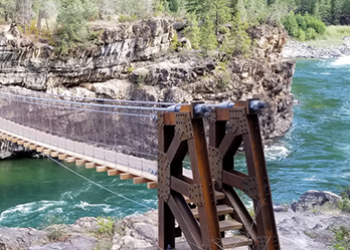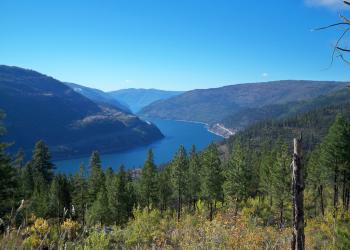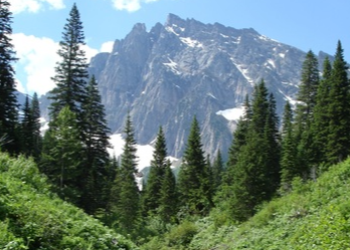Welcome to the Kootenai National Forest
Bordering Canada and nestled in the mountainous terrain of Northwest Montana the Kootenai National Forest hold impressive forests, wildlife and landscapes, including striking cliffs, spires, river canyons and the magnificent peaks of the Cabinet Mountains Wilderness and Whitefish Range. Whether your interest is recreation or local history, the KNF has something for just about everyone.
Featured Destinations
Kootenai Falls & Swinging Bridge

Kootenai Falls is one of the largest free flowing waterfalls in the northwest, dropping 90 feet in less than a mile. The main falls is 30 feet high and can be viewed from a “swinging bridge” that crosses the river.
Lake Koocanusa Scenic Byway

This stretch of State Highway 37 parallels Lake Koocanusa for 67 miles. The view of the lake is fantastic and there are numerous camping, picnicking, and boat access points located along the byway. Two marinas are also on the byway.
Cabinet Mountains Wilderness

Located within the heart of the Kootenai National Forest, the Cabinet Mountains Wilderness contains over 93,000 acres of beautiful, rugged, glacier-carved mountains.
Latest Information
Huckleberry Information

Huckleberry season is now here on the Kootenai National Forest! Huckleberries are a prized wild food and a favorite treat found across the forest. While commercial gathering of huckleberries is not permitted on the Kootenai, you are welcome to gather huckleberries for personal use. Click below for more huckleberry fun facts.
Kootenai National Forest & Lincoln County Stewardship

The Kootenai National Forest and Lincoln County recently entered into a stewardship agreement to reduce wildfire risk. Read the full article to learn more about this exciting collaborative effort.
Great American Outdoors Act

The Great American Outdoors Act gave the USDA Forest Service new opportunities to deliver benefits to the American public through major investments in recreation infrastructure, public lands access, and land and water conservation. These investments will contribute to economic growth and job creation in rural America.



